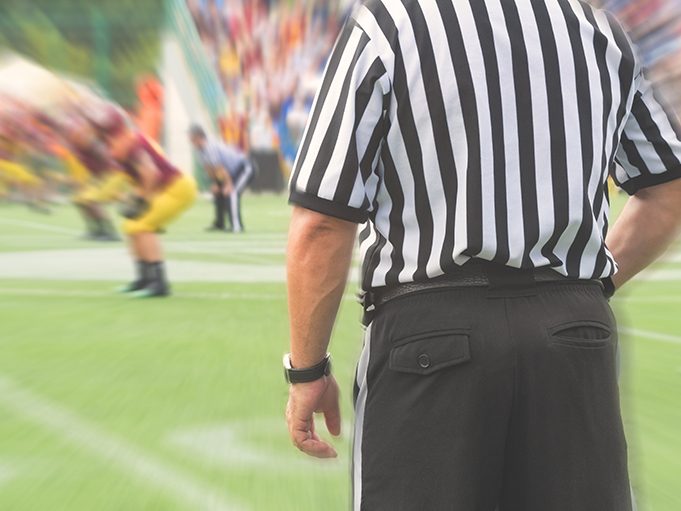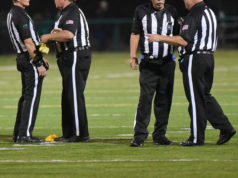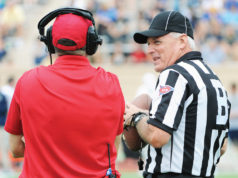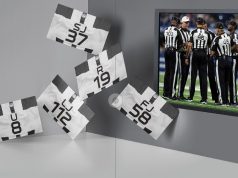There are a few things that no official has ever accomplished. By fully understanding the following feats cannot be accomplished, officials will gain a better understanding of how to get the call right.
No official has ever …
Seen through a player
Superman has X-ray vision and the scanners at the airport can see your innards, but no official has seen what happened on the other side of the nearest player, nor has he seen what a player has done with hands by looking at the player’s back.
That belies the principle of being in the right place. That edict could very well be 90 percent of what it takes to be a good official. The way some plays transpire it’s nearly impossible to utilize the correct mechanics and be able to see the whole play, but those are the exception.
Although the value of being in the correct position is indisputable, it cannot always happen. That belies the importance of deduction, or to say it differently — the use of circumstantial evidence. One example is the “pull-down hold.” The blocker gets a grip on the defender’s shoulder pads through the jersey and then pulls the opponent over himself as he falls on his back. The net effect is to create the impression that the blocker had been run over.
Had eyes in the back of his head
No official other than the umpire should ever have to worry about what goes on behind his back. That’s why wing officials work off the field. That’s why the back judge, center judge (crew of eight) and referee have to keep all players in front of themselves. Any action behind the umpire should be caught by another official. Referees and center judges must avoid letting a defensive player get behind them and sometimes doing so is challenging. There are legitimate reasons (such as the referee going to line to rule on a first down). On quarterback sacks, the referee goes immediately to the quarterback while the center judge watches for unsporting acts.
Has outrun a long forward pass
First of all, in order to try to outrun the pass, a wing official would have to know that it has been thrown. That probably means the official is watching the quarterback instead of his or her key. Albeit a good wing official can focus on his or her key and keep track of the ball with his or her peripheral vision. The point though is that there is no need to outrun any pass. Being even with a receiver, especially one near the sideline, is a poor position — too close to the action not to mention what will be missed while running at full speed.
A good position is one about 10-15 yards from a potential catch. On the short passes typical of a prep game, the official doesn’t need to move very far downfield to capture the action. Either defender or receiver can foul but not without being within arm’s distance of the other.
Not blown an inadvertent whistle
Every official has had one and when it happens the error can be magnified by denial. That is worse than the whistle itself.
While an accepted penalty on a play with an errant toot makes the whistle irrelevant, the stigma of the error remains. In other cases, there is no way to erase the injustice that is created. In a few cases, applying the inadvertent whistle rule aggravates the impact of the mistake. A good example is when the whistle is blown when a backward pass hits the ground and the defense had a clear shot at recovery. Not only is the defense denied possession of the ball, but the offense gets to do over a play it botched.
Has not dropped a ball
While it is true that how the ball is exchanged has very little to do with calling a game, it has a lot to do with how the crew is perceived. Throwing the ball so it rolls all over the field doesn’t look very good. Worse yet, chasing after the ball can take away time from pre-snap duties. A local crew once missed 12 players on the defense because the ballhandling after a kickoff was botched. The last minute no-call was pivotal at the end of a close game.
What's Your Call? Leave a Comment:
Note: This article is archival in nature. Rules, interpretations, mechanics, philosophies and other information may or may not be correct for the current year.
This article is the copyright of ©Referee Enterprises, Inc., and may not be republished in whole or in part online, in print or in any capacity without expressed written permission from Referee. The article is made available for educational use by individuals.


















